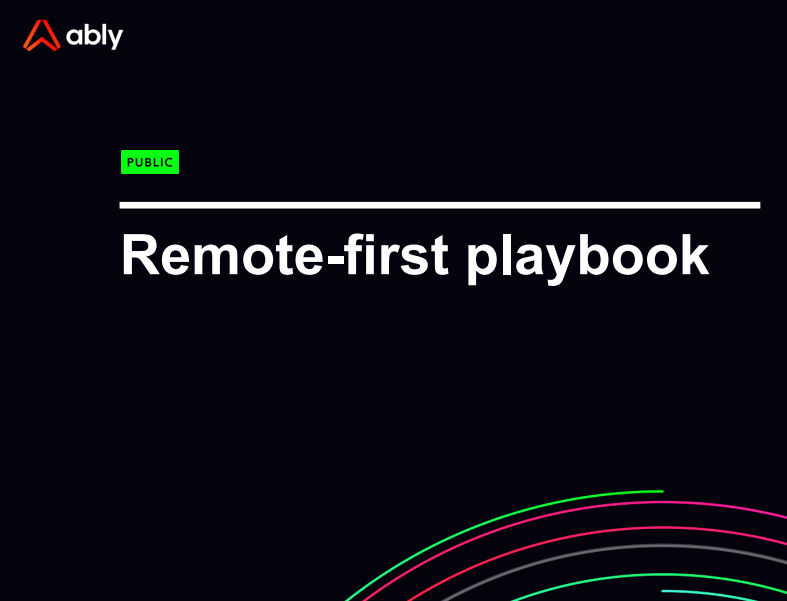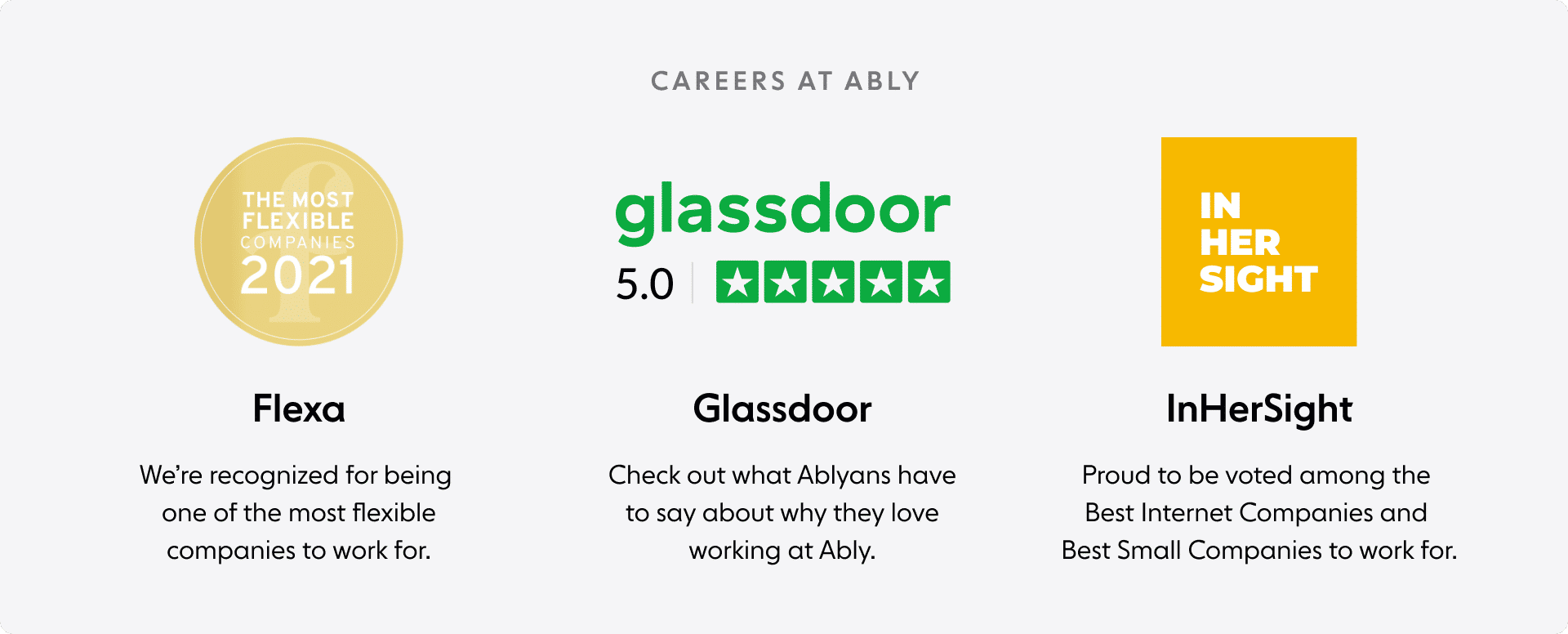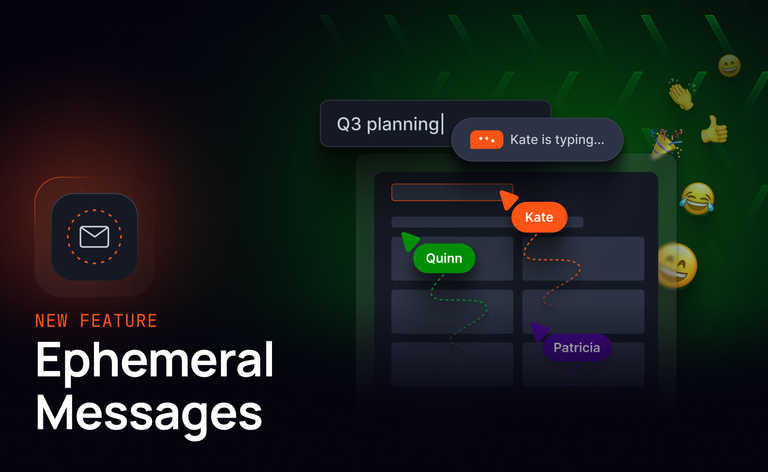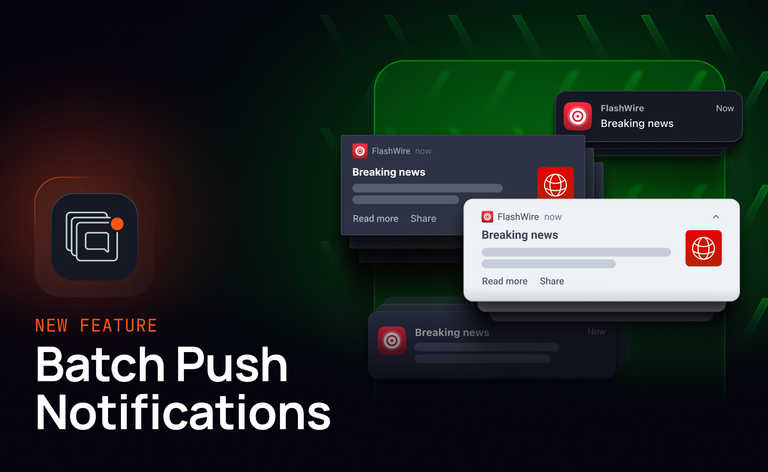Like many other companies, Ably began working remotely because of the Covid pandemic. In time, we discovered that a remote-first approach is well suited and a key driver to our success. Remote-first makes the most sense to us, considering our mission and the goals we want to achieve. It has many perks, such as being able to hire diverse talent from all over the globe, as well as reaching more customers with our technology and product offering.
Being remote-first means that we collaborate and set up processes assuming all Ablyans work, by default, from different locations and time zones. As a remote-first company, it’s essential that we are aligned in terms of how we communicate and collaborate.
We are now sharing our remote-first guidelines and tips, hoping they are helpful to other companies thinking of becoming remote-first, and also individuals who may be curious about what working for a remote-first company looks like.
Balancing asynchronous and synchronous communication
As a globally distributed team, asynchronous communication is our most prominent way of communicating, as it allows us to function and work more efficiently on a large scale.
Asynchronous communication means that we communicate in a way that does not require the recipient(s) to be available (or even awake) at the same time as the sender. We leave a trail of documentation and documented decisions that recipients can review and act on when they are available.
In doing so, we create fewer bottlenecks and information silos, empowering teams and individuals to find the information they need and collaborate efficiently. Also, this enables us to find the work-life balance that we need by fitting our work and communication preferences around people’s different schedules.
Tips to excel at asynchronous comms
Assume recipients have low context
- Always be specific about who, what, why, when, how, and where.
- Consider how you’re going to document something (whether it’s in written form, or a short video), and what you’re trying to achieve; summarize that to kick off. What are the key things you want the audience to take away? Are these obvious when reading the document or watching the video?
Be clear when articulating your ideas
- Short and simple sentences are easier to understand, and they’re far more accessible. In our case, we decided that there’s no need to jazz up our documentation; plain everyday language is fine!
Organize your content
- Be intentional about how you lay out your documents and structure videos. For example, make your written docs easily scannable; include a summary up top, headings, and make use of bullets and dividers.
- Think about how you store all the content your teams produce in order to make it easier for people to read and find information. For example, have dedicated spaces/folders per team.
- At Ably, we use Confluence, and we have a set of guidelines that help us use the tool in an organized way. Each team has a space for which they are accountable, where they store information in different sections such as team goals, projects, and decision records.
Don’t be afraid of over-communication
- Written language can be open to misinterpretation. That’s why it’s important to over-communicate, and be respectful and supportive, thus building trust and fostering inclusivity. We assume positive intent but also make sure that we are communicating in a way that shows we are being polite.
- Although pushing for over-communication is wise, be mindful when producing content so that you don’t end up with an overflowing content library. How do we keep our content valuable?
- Make sure that you document only what is relevant and necessary. For example, we use Decision Records, which are documents that help us make a decision and also leave a documented trail of why and how something happened.
- Use analytics to track how your content is being used, viewed, and edited.
- With the above in mind, do regular clean-ups and updates, and don’t be afraid to archive or delete what is no longer needed.
Making sure synchronous work is impactful
While we most frequently use async communication, sometimes synchronous communication is a better option. We rely on sync comms for brainstorming, sharing feedback, getting up to date, finalizing decisions, and getting to know one another. We also use synchronous comms to handle urgent requests, resolve time-sensitive issues, and move forward with lengthy back and forth discussions that have been lasting for days.
However, we know that meetings can be a particularly challenging way of doing synchronous comms. Some people may default to meetings thinking it's more efficient; but, in reality, this often leads to lots of context switching and disrupts focus. For example, someone may think that it's quicker to review a document during a meeting. In practice, though, this is often better done in an asynchronous way, leaving suggestions and comments. That’s why we have put together key tips to ensure we have effective meetings:
Have a clear purpose
- Before we set up a meeting, we think it through and consider whether we actually need that meeting. In fact, we have different types of meetings. For example, the “approval meeting”, which we use to sync over the final points and reach a decision or get an approval. However, meetings should never be held for the sole purpose of sharing information that is not time-sensitive, we have other async channels for that.
Include an agenda and useful resources
- The agenda provides a compass to guide the conversation, so we always include one in the meeting invite.
- Useful resources are a key part of the meeting prep as they allow everyone to be aligned over the goal and purpose of the meeting. Share information and materials ahead of the meeting. You should make it clear that people are expected to review the material ahead of time.
Invite the right people and decide the appropriate length
- You want to invite the people that are relevant to the topic and need to be there in order to achieve your goal, making sure that there are enough different perspectives, backgrounds, and knowledge, especially if the purpose is to brainstorm.
- We have various types of meetings (depending on the goal), with different lengths. For example, a decision or approval meeting (where you’re just syncing on some final points and deciding an outcome) should last about 15 minutes, whereas we try to keep 1-1 meetings between manager and employee between 30 minutes to 1 hour long.
Ensure the meeting is engaging & inclusive and guide it towards the goal
- The meeting organizer is responsible for managing the meeting towards the goal, and ensuring that it's a safe and engaging space for everyone to chip in.
- Make it remote-friendly. Even if most participants are in the same room, we always include a Google Meet or Zoom link and connect from our own devices, so the meeting is both accessible and inclusive for people joining from remote locations.
Concise action points and timely follow-up
- Leave the last few minutes of every meeting to discuss results, key takeaways, and next steps. This discussion should include deciding who is responsible for what, and the deadlines for each action point.
- Once you have finished the meeting, share a write-up (meeting notes). This will be helpful for others to understand what was decided and what are the next steps. It also keeps information flowing and open.
Choosing the right channels and tools
At Ably, we’re mindful of what channels we choose to communicate and collaborate. We have a remote-first playbook in which we detail the purpose of our most widely-used systems, and provide tips on how to use them. For example, when should we use email vs. Slack? Or when should we store our documents in Confluence vs. Google Drive? Which teams use Jira, and which ones Asana? These are just some of the topics we cover, and although we don’t always have it 100% figured out, it’s helpful to have some set principles to guide our day-to-day work.

Learnings from being remote-first
Through our time as a remote-first company, we’ve had and continue to have many trials and errors as we figure out what works best for us.
We’ve learned a lot from our failures – for example, being async does not mean that we should only be written-first, as there are other ways to document knowledge that are just as impactful, such as videos. We’ve realized that behavioral change takes time, and we encourage gradual changes to improve how we work. For example, we are considering a “no meetings day” to help people have more focus time.
Ultimately, it’s important that we share thoughts and ideas as a company, working towards being aligned about how we connect and communicate. Moving forward, we hope to continue iterating and growing the guidelines and resources that empower us to be great at remote-first.
If you’re interested in being part of a remote-first company such as Ably, you’re in luck because we’re hiring! Are you passionate about realtime technologies and how they help power live and collaborative experiences for online users everywhere? Have a look at our open roles (all remote-first) and come join us.
And, if you are a remote-first company, feel free to reach out to the author of this blog post at [email protected] and tell us what ways of communicating and connecting work for you!





